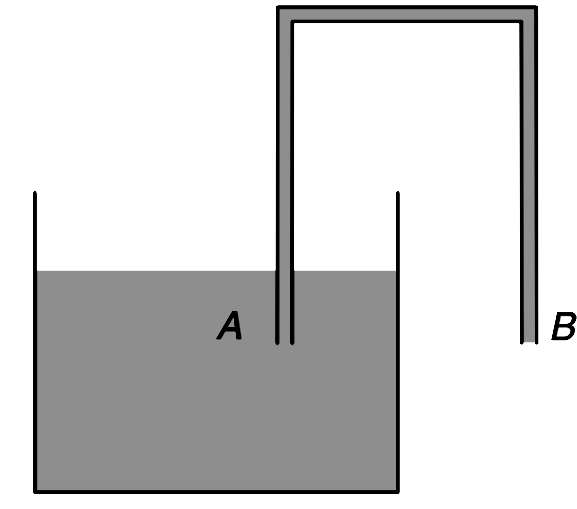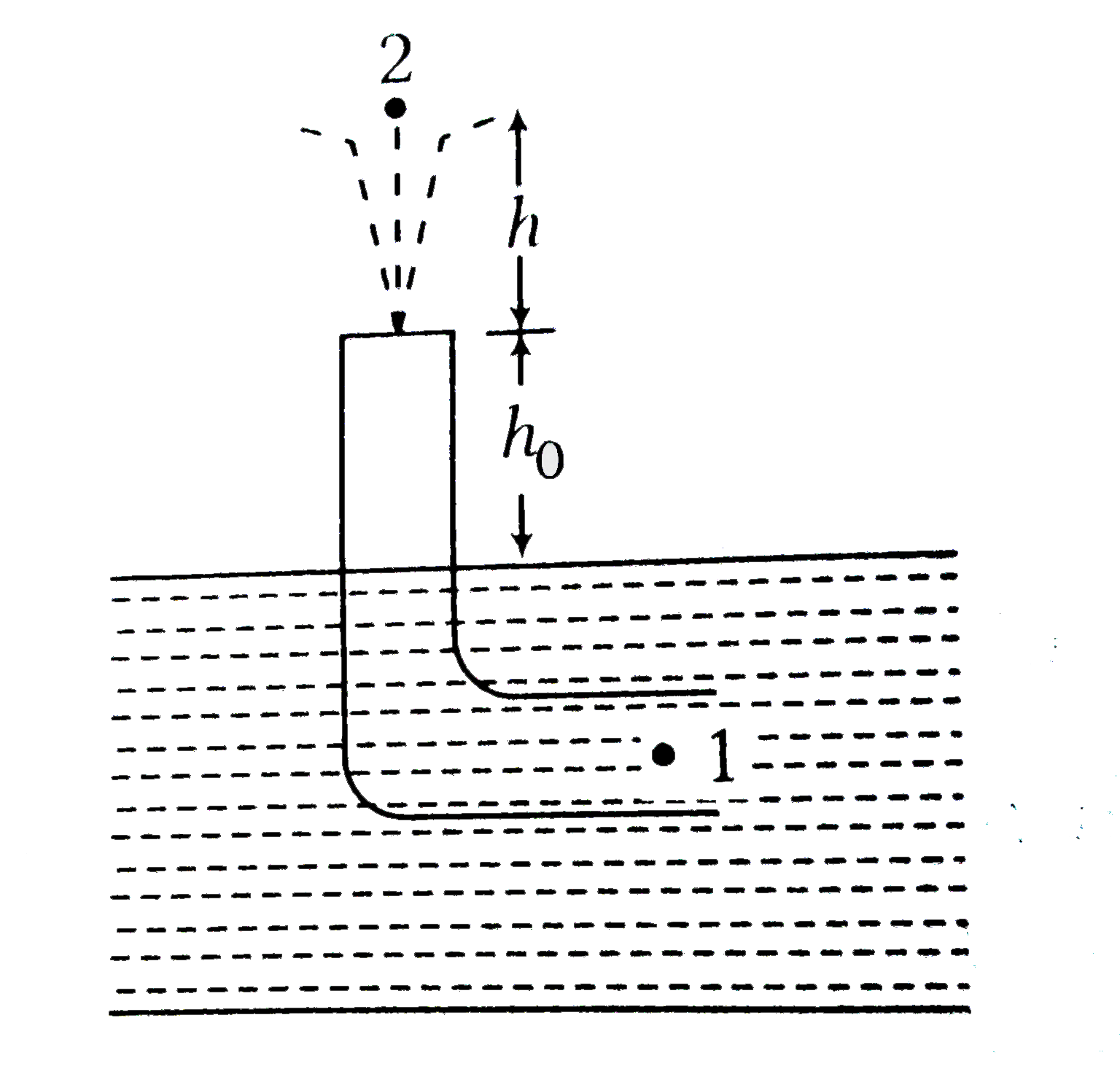In the siphon shown in the figure the ends A and B of the tube are at same horizontal level. Water fills the entire tube but it does not flow out of the end B. With the help of a diagram show how the water surface at end B changes if the end B were slightly lower than the position shown.

The correct Answer is:The radius of curvature decreases
Step by step video, text & image solution for In the siphon shown in the figure the ends A and B of the tube are at same horizontal level. Water fills the entire tube but it does not flow out of the end B. With the help of a diagram show how the water surface at end B changes if the end B were slightly lower than the position shown. by Physics experts to help you in doubts & scoring excellent marks in Class 11 exams.
Updated on:21/07/2023Topper's Solved these Questions
Similar Questions
A siphon is used to drain water (density=ρ) from a wide tank. The inlet and outlet mouth of the siphon are at the same horizontal level and the highest point of the siphon tube is at a height H from the mouth of the tube. Height of water in the tank above the tube mouth is h (see fig). Atmospheric pressure is P0.
(a) Will the water drain out in this siphon? if yes, at what speed (V)?
(b) Find pressure at the top of the siphon tube (call in P)
(c) Find pressure just inside the left mouth of the tube.
(d) If left part of the tube is slightly cut short, without disturbing anything else, what effect it will have on V and P?
(e) If the right end of the tube is lowered by adding more lenght of tube, it was observed that flow stops when lenght of right limb of the tube becomes H0. Find H0.

View SolutionFor the arrangement shown in the figure,blocks A and B are placed on the smooth horizontal surface.The free end P of the thread is being pulled by a constant force "F=1N" .Find the acceleration of free end P.
View Solution
Knowledge Check
A bent tube is lowered into the stream as shown in the figure below. The velocity of the stream relative to the tube equal to v. The closed upper end of the tube located at the light h0. To what height h will the water jet spurt ?
 Av22gBv22g+h0Cv22g−h0Dv24g−h0
Av22gBv22g+h0Cv22g−h0Dv24g−h0Tube A has both ends open while tube B has one closed, otherwise they are identical. The ratio of fundamental frequency of tube AandB is
A(a) 1:2B( b) 1:4C( c ) 2:1D(d) 4:1In the figure shown, water flows into the open vessel through pipe A at a constant rate. The water can flow out of the vessel by pipe B. The maximum flow-rate fo the water in pipe B is slightly more than that in pipe A. Final height of the water level in the vessel would be
 Ah0BhfCsomewhere in-between h0 and hfDThe water level will keep oscillating in the vessel
Ah0BhfCsomewhere in-between h0 and hfDThe water level will keep oscillating in the vessel
A20 cm long cylindrical test tube is inverted and pushed verticallydown into water. When the closed end is at the water surface, how high has the water risen inside the tube ?
View SolutionThe water level in a vertical glass tube 1.00 m long can be adjusted to any position in the tube. A tuning fork vibrating at 900 Hz is held just over the open top end of the tube, to set up a standing wave of sound in the air-filled top portion of the tube. (That airfilled top portion acts as a tube with one end closed and the other end open.) (a) For how many different positions of the water level will sound from the fork set up resonance in the tube's air-filled portion? What are the (b) least and (c ) second least water heights in the tube for resonance to occur?
View SolutionWater is flowing through a long horizontal tube. Let PAandPB be the pressures at two points A and B of the tube
View SolutionWater enters into a smooth horizontal tapering tube with a speed 2 m/sec and emerges out of the tube with a speed 8 m/sec . Find the ratio of the radii of cross sections of the tube at these two ends.
View SolutionIn the figure shown the end A of the rod of length L is being pushed down parallel to the inclined surface with a velocity =v let the velocity of end B=u and the angular velocity of the rod = ω then

View Solution
